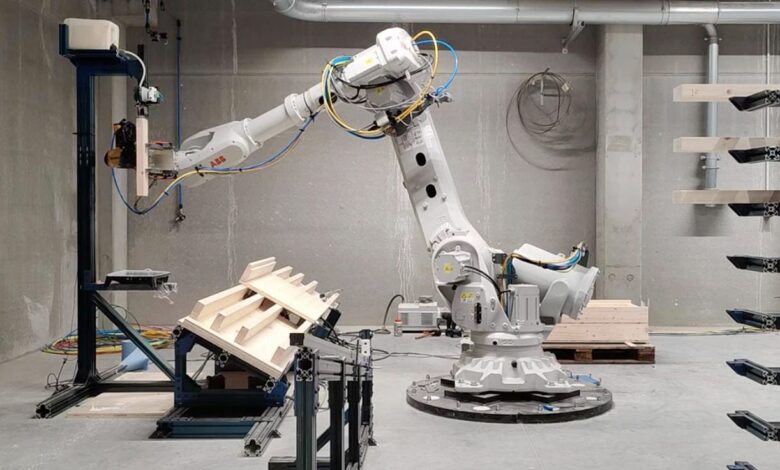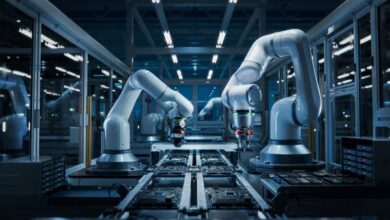Robotics, Sustainability, Resiliency Are Standards For Future Homes

AUAR’s automated micro-factories deliver homes based on a building block system.
As resistant as the housing industry has been to adopting new technology, some innovations are breaking through the barrier. From the actual home construction all the way to operations and user experience, every part of the home experience is being touched by technology and automation.
Through that technology and automation, housing can become productized and be delivered faster. Not only that, but homes can be delivered at a higher quality, with better performance, and with longer-term resiliency features.
These three innovative companies are bringing automation to the forefront and championing this new level of housing.
Speeding The Process With Robotics
The name of the game is speed to solve the current housing crisis. So, new approaches to automation and robotics are bringing new homes online faster than ever before.
Mollie Claypool, founder and CEO at Automated Architecture, or AUAR for short, has created a micro-factory for producing a programmable pixel building block that can produce 10 homes per month, and reduce labor costs by up to 60%.
AUAR’s patented design to manufacturing and assembly system programs robots to use one pixel in several different ways in the construction of timber homes.
“The building blocks of all automation is code, so we thought, why don’t we have a building system that is designed like a bit,” Claypool said. “AUAR’s building block sits at the core of our tech stack and can be best understood as a volumetric pixel or ‘voxel,’ or in layman’s terms, as a Lego. The building block can uniquely be used for floors, walls, and roofs. It is different because it is based on a computational reading of what building blocks need to be.”
An AUAR micro-factory has a single robotic cell that can build many types of the same building block and the complimentary tech stack can be licensed to partners like a contractor, home builder, offsite manufacturer, or developer. The micro-factory can fit into a shipping container-sized box, is priced at just $312,000 so it can provide a payback in 6 weeks if used at full capacity, and it can produce about 100 homes per year.
“It lowers the threshold for robotic adoption because typically it’s a long set up and a long pay off with big upfront capital investment,” she said. “We have one micro-factory operational now, and are currently onboarding three more in Belgium, the U.S., and the U.K.”
Another company on the path to crank out housing with robotics is Cosmic Buildings, founded by Sasha Jokic, whose long time construction robotics experience has been leveraged to create a completely new construction method for building self-sustainable homes.
Cosmic builds homes as a kit of panelized parts that can be put together in the factory or can be sent to the job site. Currently, Cosmic has the capacity to deliver 10 to 15 homes per month with plans to increase with more automation.
The panels are pre-installed with wires and finishing material to minimize site work to only 20%. The installation method depends on the project’s final location and whether the site can be easily accessed by a crane. If the site allows the home to be shipped as a whole, the install only takes 24 hours.
“We want to completely take out the labor on the fabrication side, so the home is designed to be fully automated,” Jokic said. “We are using CNC for building structural panels right now and we are waiting for the time there is enough volume to justify investment in a fully automated process.”
Right now, Cosmic is focusing on turnkey service by offering a complete project that includes unit design, construction service, financing, and even the permitting. With its careful planning, a Cosmic Building doesn’t require grid connection, so the goal is to be able to avoid typical permitting.
“If you can prove that the home can function self sustainably within the factory then you don’t have to go through conventional permitting,” he said. “You just need to be compliant with the zoning. The utility side is the biggest problem.”
Cosmic also partnered with mortgage companies to offer proprietary financing since this has been a challenge for homeowners to access.
Onx has operations divided into three factories to scale offsite construction activities and deliver … [+]
The third innovator, Florida-based Onx Homes, was founded to address the shortage of housing with a more resilient solution. Ash Bhardwaj is the co-founder and CEO at Onx and wants to help homeowners solve for the insurance stress and increased energy bills, and maintenance costs that are adding up along with the lifetime ownership cost of the home.
With three single-purpose factories across the state, Onx can build a 1,200-plus square foot home in less than 30 days. The home components are designed to be easy to build in a factory, and the three factories are divided into foundation work, bathroom pods, and roof and structure. All the components are finished with the mechanical, electrical and plumbing at the factory.
After being delivered to the site, the finishing work takes 30 days.
The company plans to complete more than 700 homes this year and refine its process to increase capacity and go nationwide within the next 5 to 7 years. The company has already delivered 500 homes for 1,500 people in 3 communities.
The build cost of an Onx Home is less than competitors. The company is passing along materials savings, and what they save on the cost of materials, they provide upgrades. Plus, the speed and automation mean that the vertical construction is 25% cheaper.
Next-Level Sustainability
With advanced design and automation, these companies can tie in energy efficiency as a standard.
AUAR’s generative design tool captures all the materials along with their energy performance and carbon emissions to make accurate calculations on embodied and operational carbon. Its homes have reached Passive House standards, achieving seven times more energy efficiency than a standard home, along with eight times lower carbon emissions than concrete and steel, and have reduced the use of unsustainable materials by 90%.
Cosmic Buildings offers three floorplans that can be mixed and matched and operate off grid at a net … [+]
Cosmic homeowners also can access data on how much energy the home is producing, how much is stored, the amount used, and how much carbon is offset.
“What’s really unique about what we build is that the product we launched in March is the most sustainable product in the market,” said Jokic. “Homes also can act as a power plant in the backyard with an integrated, full-scale solar roof and giant energy storage. Daily a home needs 8 kWh and this home can provide about 4 times more than it needs.”
The homes are not immediately net zero, but after a couple years, can be net positive, along with being able to offset embodied CO2 from the construction after a couple years. The walls are insulated to rate R-33 with net zero certified windows and Energy Star appliances.
Cosmic also wants to set a new benchmark for the home as a healthy space and has built sensors into the home to measure the quality of the air. It has been careful not to specify any toxic materials. Plus, it is constantly evolving its water recycling program to be able to deliver all household needs with recycled water. Now, 45% of the water consumption has been offset by the water recycling system, and Jokic sees homeowners being competitive to use less water.
Of its 35-plus patents, Onx Homes counts many focused on sustainability, from proprietary mixes to design elements, and to reducing waste. Its low carbon concrete achieves the same strength and performance as other concrete but uses much less cement.
“By 2030, we will have about 65% lower emissions using bio-concrete, green steel and a fully electrified construction fleet,” Bhardwaj said. “Onx’s homes produce 20 to 30% less operational emissions than a comparable home through more efficient energy use and can reduce energy costs by 30 to 40% per month.”
A very purposeful and thoughtful biophilic design contributes to sustainability and health and wellbeing.
“The inside and outside living design philosophy on cross ventilation and daylight capture ensure homeowners don’t have lights on until sunset,” he said. “Our homes have 60% more windows than traditional homes and we have HVAC technology to reduce energy use with air exchanges and energy transfer.”
Standing Up To Climate Change
With more frequent and more intense climate hazards, these builders also had to consider resiliency in the feature set.
Cement fiber, fire-rated material covers the exterior of the Cosmic Buildings so the air filtration system, windows, and façade are protected longer if there is a fire.
With Onx, the proprietary carbon concrete technology is resilient enough so the homes can last for more than 1,400 years. The monolithic precast steel reinforced panels with insulation can withstand level 4 and 5 hurricanes.
“Onx Home consumers are in south Florida and have seen a lot of weather challenges,” Bhadwaj said. “Many are Hispanic and from countries that are used to concrete homes. The challenge they faced was resiliency. What really resonates with them is the quality of the home.”
The monolithic system is able to solve for speed and resilience, while also lowering the cost of ownership because maintenance is low and is resistant to damage.
Going Beyond With Convenience
Cosmic plans to move to mobile factories in the future that would go from job site to job site as needed, but is building volume and validation before making that investment.
Being from war-torn Croatia, Jokic wants to pay it forward and turn Cosmic Buildings into a public benefit corporation to generate social good. After moving around from city to city to escape war, he learned first hand how much impact housing can have, so he started a foundation to give 1% of every sale to help war displaced children.
“No one can alter the mission,” he said.
Cosmic Building has three options: a 385-square-foot studio, a 595-square-foot, one-bedroom, and a 750-square-foot two bedroom, which can be combined for a larger home. The units are about 5% more than competitive products, listed at $279,000, $359,000 and $419,000.
Jokic is constantly monitoring the process and to arrive at the right scale to decrease the cost.
AUAR also is partnered with ABB Robotics and plans to leverage that relationship to unlock a distribution model. Distribution will enable the company to scale quickly as in a SaaS model, something that doesn’t currently exist as a model within construction.



